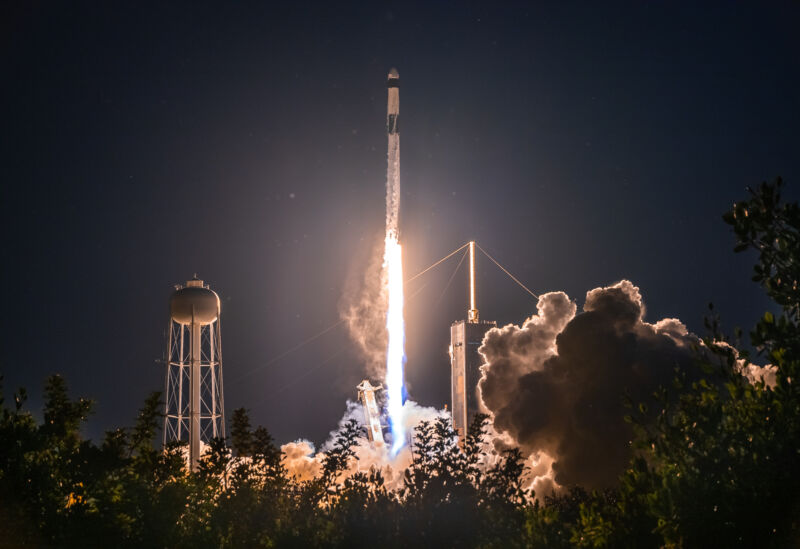

SpaceX is now launching 10 rockets for every one by its main competitor
source link: https://arstechnica.com/science/2022/07/spacex-just-matched-its-record-for-annual-launches-and-its-only-july/
Go to the source link to view the article. You can view the picture content, updated content and better typesetting reading experience. If the link is broken, please click the button below to view the snapshot at that time.

Records were made to be broken —
SpaceX is now launching 10 rockets for every one by its main competitor
In the meantime, SpaceX continues to build a massive launch tower in Florida.
Eric Berger - 7/18/2022, 5:17 PM

With little fanfare this weekend, SpaceX launched two Falcon 9 rockets. The first booster lifted off on Friday night and carried nearly three tons of supplies to the International Space Station, including two new space suits, for NASA. The second mission launched on Sunday boosted another batch of 53 Starlink satellites, bringing the on-orbit total to more than 2,500 operational Internet spacecraft.
The launches attracted relatively little notice in the space community and beyond because Falcon 9 launches have become so commonplace. Already this year, SpaceX has launched 31 rockets, all successfully. This tally matches the number of Falcon 9 boosters orbited in 2021, which at the time set a record for the launch company.
But this year, SpaceX has taken its cadence to another level, with a mix of payloads including its Starlink satellites, crew and cargo missions for NASA, Department of Defense missions, and commercial satellites. As of Monday, the Falcon 9 rocket has launched every 6.4 days this year and has lofted nearly 300,000 kg into low Earth orbit. This is considerably more than every other country and company in the world combined. Two more Starlink launches are likely this week.
SpaceX has also continued to push the boundaries of reuse. In the last month, the company flew three different first stages on its 13th flights. SpaceX officials say they have gathered enough data about reusing these first-stage cores that, for now, there seem to be no showstoppers to preclude flying many more missions each.
AdvertisementTo put this cadence into perspective, consider the flight rate of SpaceX's main US-based competitor, United Launch Alliance. Counting both its Delta and Atlas fleets, ULA launched its last 31 rockets from March 19, 2017, to the present day. That's a cadence of one launch every 64 days.
Put another way, SpaceX is now launching at a rate of 10 rockets to every one of its main American competitor. Both companies have 100 percent success rates during this time period.
This competition will change in nature in the coming years. ULA will soon debut its new heavy lift Vulcan rocket, likely during the first half of 2023. With a lengthy launch manifest that includes both institutional customers and Amazon's Project Kuiper, the company's cadence should increase significantly. This likely will come sometime in the mid-2020s as ULA scales up its operations and Vulcan production capabilities.
SpaceX is also making progress on its next-generation Starship rocket. This super-heavy lift rocket is likely to begin a series of test flights from South Texas in the next six months. But SpaceX is also spooling up operations in Florida for operational launches of Starship and its Super Heavy booster. To that end, the company has now stacked several segments of an orbital launch tower at the Launch Complex 39-A site at Kennedy Space Center. During a remote camera setup ahead of Friday's cargo launch for NASA, photographer Trevor Mahlmann was able to capture a zoomable panorama of the launch tower for Ars.
SpaceX has not definitively stated how it will divide Starship launch activities between Florida and South Texas. But it increasingly seems likely that the company will conduct experimental test flights of Starship from Texas and only move to the Florida range after it has confidence in the performance of the vehicle. This makes sense given the high-value assets of NASA, the Department of Defense, the National Reconnaissance Office, and other launch companies nearby in Florida.
Recommend
About Joyk
Aggregate valuable and interesting links.
Joyk means Joy of geeK